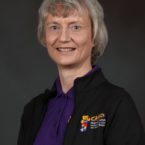Abstract
Background
Physical literacy is a complex construct influenced by a range of physical, behavioural, affective, and cognitive factors. Researchers are interested in relationships among these constituent factors. The purpose of this study was to investigate how age, gender, and physical competence components of physical literacy relate to a child’s adequacy in and predilection for physical activity.
Methods
A sample of 8530 Canadian youth (50% girl) aged 8.0 to 12.9 years participated in the study. Participants completed the Canadian Assessment of Physical Literacy (CAPL) protocol, which assesses physical literacy in four domains: Physical Competence, Daily Behaviour, Motivation and Confidence, and Knowledge and Understanding. Stepwise multiple regression analyses were conducted to investigate the relationship between physical competence components of physical literacy (Progressive Aerobic Cardiovascular Endurance Run [PACER], Canadian Agility and Movement Skill Assessment [CAMSA], sit and reach, handgrip, plank, and body mass index) and children’s perceived adequacy and predilection toward physical activity as measured by subscales from the Children’s Self-Perceptions of Adequacy in and Predilection for Physical Activity scale (CSAPPA).
Results
The variable most strongly associated with adequacy and predilection was the PACER shuttle run score. The PACER accounted for 10.9% of the variance in adequacy and 9.9% of the variance in predilection. Participants’ age was inversely related to adequacy (β = − 0.374) and predilection (β = − 0.621). The combination of other variables related to adequacy brought the total variance explained to 14.7%, while the model for predilection explained a total of 13.7%.
Conclusions
Results indicate an association between cardiorespiratory fitness and measures of physical activity adequacy and predilection. These findings suggest that practitioners should consider the physiological and psychological makeup of the child, and ways to enhance adequacy and predilection among children with limited cardiorespiratory fitness, in order to create the best possible environment for all children to participate in physical activity.
Researchers
-
Patricia Longmuir
Senior Scientist, CHEO Research Institute
-
Mark S. Tremblay
Senior Scientist, CHEO Research Institute


